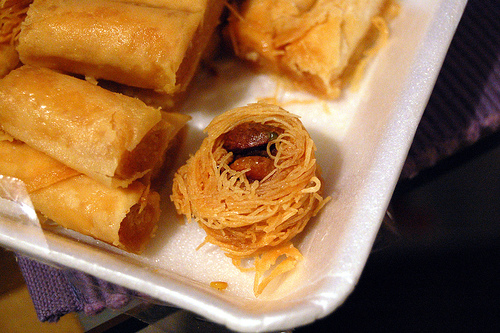In recent years, Turkish cuisine has become very popular around the world, but if you want a truly authentic Turkish culinary experience, you have to visit the country itself. For great deals on all inclusive holidays to Turkey, visit the On The Beach website.
Turkish cuisine is largely descended from Ottoman cuisine, which draws on a range of Balkan, Middle Eastern, and Central Asian influences. During the reign of the Ottoman empire, these influences were fused to create a great number of region-specific specialties.
The food of the Aegean region, which includes Istanbul, Izmir, and Bursa, retains many elements of traditional Ottoman court cuisine. There is a strong preference for rice over bulgur wheat, lighter spices are used, and seafood is more widely used. For obvious reasons, fish forms a large part of the cuisine in the area around the Black Sea – particularly hamsi (Black Sea anchovy). Also because of its location, there is a heavy influence of Slavic and Balkan cuisine, and many specialties use maize.
The southeast of Turkey, which includes Urfa, Adana, and Gaziantep, is famed for its mezes, kebabs, and deserts made with dough such as künefe. kadayif, and baklava. And to the west of Turkey, where olive trees are abundant, olive oil is made liberal use of. Around the Aegean, Mediterranean, and Marmara regions, the cuisine uses a lot of vegetables, herbs, and fish, and Central Anatolia is known for specialties such as gözleme, kashkak and manti.
Baklava courtesy of Su-lin
Often, a specialty will be named after a city or region in or around Turkey, and the location can also be used to denote a particular technique or set of ingredients. For example, the difference between an adana kebab and the urfa kebab lies in the size of the skewer, and the amount of hot pepper contained in the kebab.
Usually, a Turkish meal will start with a thin soup, or çorba. Two of the most popular varieties are a cabbage soup called Lahana, and Bademli tavuk, which is chicken soup with almond. This will usually be followed by meze, which is a selection of appetizers such as dolma (stuffed vine leaves), hummus, and kofte (meatballs).
Savoury pastries are a big part of Turkish cuisine, with popular specialties such as lahmacun, a type of pizza made with minced lamb and herbs on flatbread,  and gözleme, which is made of phyllo dough or lavash bread folded around fillings such as minced mead and potatoes or spinach and cooked on a griddle.
One of the most popular Turkish cooking styles is ocakbasi, which involves placing meat, fish, and vegetables on a kebab skewer and cooking it over a barbeque grill. However, there are many different meat preparation techniques used in Turkish cooking, such as Tandir, a special technique in which the meat is cooked very slowly in a special clay oven, and Sujuk, a type of curing process for raw sausage.
Finally, no Turkish meal would be complete without some baklava (a sweet pastry made out of hundreds of very thin layers), and a traditional Turkish coffee – with or without sugar – as an aperitif.


Be First to Comment